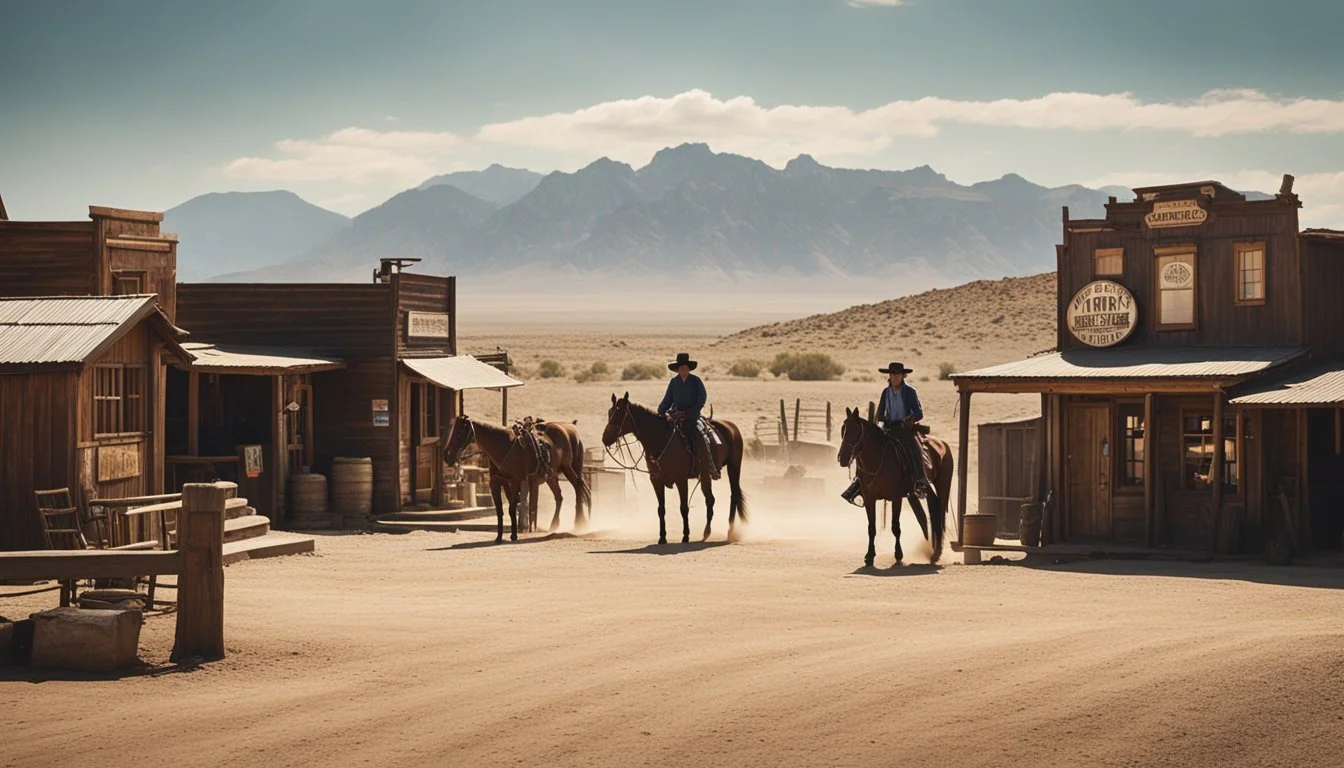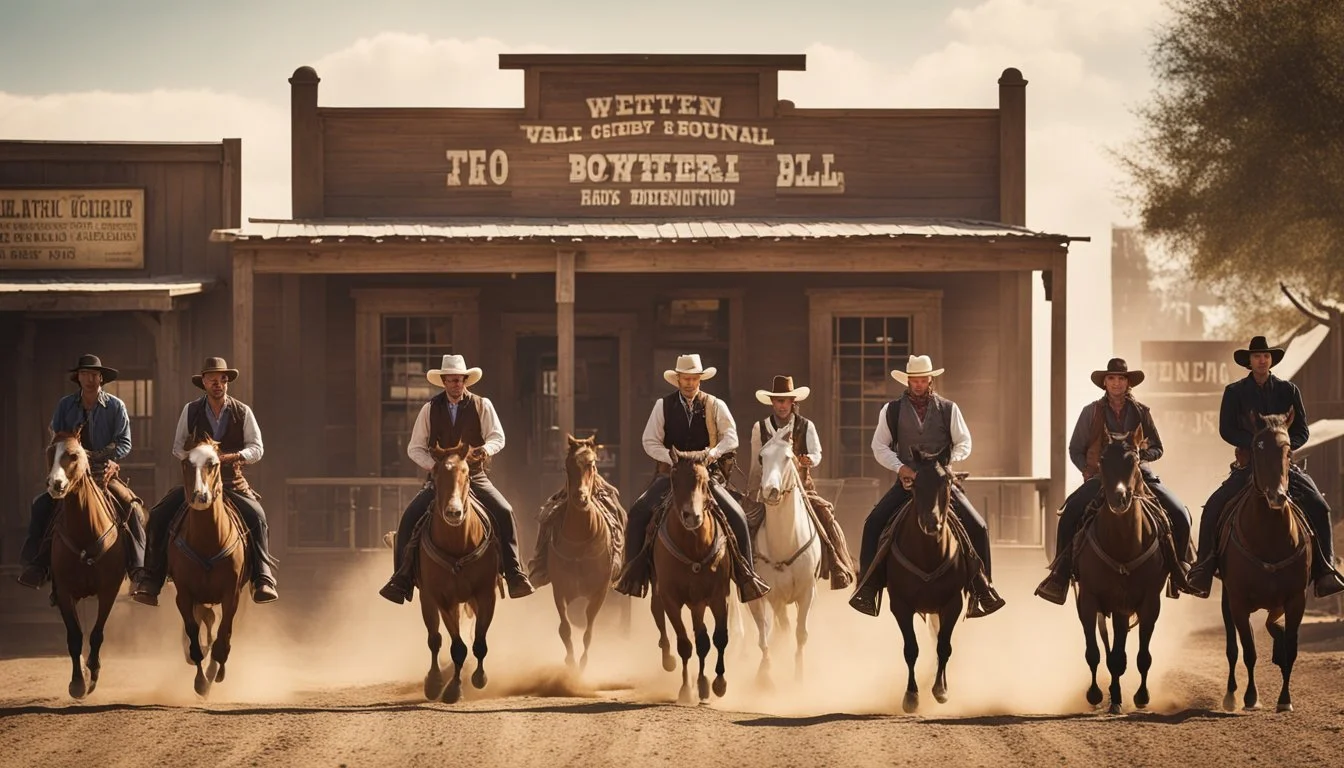5 Curly Bill Brocius Documentaries That Explore His Cowboy Legacy
Unveiling the Wild West's Notorious Outlaw
Curly Bill Brocius was a notorious outlaw and gunman who made his mark on the American Old West in the late 1800s. Known for his involvement with the Cowboys faction in Tombstone, Arizona, Brocius gained infamy through his clashes with lawmen and his alleged role in various criminal activities. His enigmatic life and controversial death have captured the imagination of historians and Western enthusiasts for generations.
The legacy of Curly Bill Brocius continues to intrigue modern audiences, inspiring numerous documentaries that explore his life, crimes, and impact on frontier society. These films delve into historical records, eyewitness accounts, and expert analyses to paint a picture of the man behind the legend. By examining Brocius's story, viewers gain insight into the complex dynamics of law and order in the Old West, as well as the enduring fascination with outlaw figures in American culture.
1) "Curly Bill: A Cowboy's Life" by History Channel (2018)
This History Channel documentary provides an in-depth look at the life of William "Curly Bill" Brocius, one of the most notorious outlaws of the American Old West. The film explores Brocius's early years and his rise to infamy in the Arizona Territory.
Through expert interviews and historical reenactments, viewers gain insight into Curly Bill's involvement with the Clanton gang and his conflicts with the Earp brothers. The documentary examines his reputation as a skilled gunfighter and cattle rustler.
Archival photographs and period documents help illustrate the lawless atmosphere of 1880s Tombstone, Arizona. The film also delves into Brocius's complex relationships with other prominent figures of the era, including Johnny Ringo and Wyatt Earp.
"Curly Bill: A Cowboy's Life" offers a balanced portrayal of its subject, discussing both his criminal activities and his charismatic personality. The documentary concludes with an analysis of Brocius's lasting impact on Western folklore and popular culture.
More information on History Channel documentaries
2) "The Wild West Chronicles" featuring Curly Bill (2021)
"The Wild West Chronicles" brings the story of Curly Bill Brocius to life through dramatic reenactments and expert commentary. This television series explores the notorious outlaw's exploits in the Arizona Territory during the 1880s.
The show delves into Curly Bill's involvement with the Cochise County Cowboys and his conflicts with lawmen like Wyatt Earp. It examines his reputation as a charismatic yet dangerous figure in the Wild West.
Actors portray key moments in Curly Bill's life, including shootouts and confrontations with local authorities. Historians provide context and analysis of his impact on frontier society and law enforcement.
"The Wild West Chronicles" offers viewers a glimpse into the complex world of 19th-century outlaws and the efforts to bring them to justice. The series presents a balanced look at Curly Bill's legacy as both a feared gunman and a product of his times.
More information on "The Wild West Chronicles"
3) "Outlaws of the Old West: Curly Bill" on PBS (2018)
This PBS documentary offers a comprehensive look at Curly Bill Brocius and his impact on the American frontier. The film explores Brocius's reputation as a skilled gunman and his involvement with the Cochise County Cowboys.
Interviews with historians and Old West experts provide context for Brocius's life and times. The documentary examines his alleged role in various crimes and confrontations, including the infamous Skeleton Canyon Massacre.
Archival photographs and reenactments bring Brocius's story to life. The film also delves into his relationships with other notable figures of the era, such as Wyatt Earp and Johnny Ringo.
"Outlaws of the Old West: Curly Bill" presents a balanced view of Brocius, acknowledging both his outlaw status and his place in Western folklore. The documentary sheds light on the complex social and economic factors that shaped the Old West.
More information on PBS documentaries
4) "Legends of the West: Curly Bill Brocius" by National Geographic (2019)
National Geographic's documentary offers a compelling look at Curly Bill Brocius's life and legacy. The film explores his rise to notoriety in the Old West, detailing his exploits as a cowboy and outlaw.
Interviews with historians and experts provide context for Brocius's role in the tumultuous frontier era. The documentary examines his involvement with the Clanton gang and his conflicts with lawmen like Wyatt Earp.
Reenactments bring key moments of Brocius's life to the screen, including his alleged shooting of Tombstone marshal Fred White. The film also delves into the circumstances surrounding Brocius's death and the competing accounts of how he met his end.
"Legends of the West" presents a balanced view of Brocius, acknowledging both his criminal activities and his reputation as a charismatic figure. The documentary situates his story within the broader context of the American frontier's transformation.
More information on National Geographic documentaries
5) "Gunfighters of the Old West: Curly Bill's Tale" by American Experience (2018)
This documentary from the acclaimed American Experience series sheds light on Curly Bill Brocius's role in the tumultuous Old West. The film meticulously examines Brocius's life as an outlaw and gunfighter in the Arizona Territory during the 1880s.
Through expert interviews and historical reenactments, viewers gain insight into Brocius's involvement with the Clanton gang and his conflicts with lawmen like Wyatt Earp. The documentary explores the socioeconomic factors that contributed to the rise of outlaws in the region.
"Gunfighters of the Old West" presents a balanced portrayal of Brocius, neither glorifying nor demonizing his actions. It contextualizes his life within the broader narrative of frontier expansion and the clash between lawlessness and civilization.
The film draws on primary sources, including newspaper accounts and eyewitness testimonies, to reconstruct key events in Brocius's life. It also analyzes his lasting impact on popular culture and the mythologization of the Wild West.
More information on American Experience documentaries
Historical Context of Curly Bill Brocius
Curly Bill Brocius was a notorious outlaw who operated in the Arizona Territory during the late 1870s and early 1880s. His life and activities were intertwined with the lawless frontier culture of the American Old West.
Early Life and Background
William Brocius, better known as Curly Bill, was born around 1845. His exact birthplace and early years remain shrouded in mystery. Limited records exist about his childhood or family background, contributing to his enigmatic persona.
Brocius likely gained experience with firearms and horseback riding in his youth, skills that would later serve him in his outlaw career. He appeared in Arizona Territory in the late 1870s, already possessing a reputation as a skilled gunman.
Involvement in the Cowboy Gang
Curly Bill rose to prominence as a leader of the Cochise County Cowboys, a loose-knit group of cattle rustlers and outlaws. The Cowboys operated in the lawless border region between Arizona and Mexico.
Brocius participated in cattle theft, robbery, and other illegal activities. He was known for his charismatic personality and ability to lead the outlaw band. His notoriety grew after he accidentally killed Tombstone Marshal Fred White in 1880, though he was acquitted of wrongdoing in that incident.
Role in the American Old West
Curly Bill Brocius embodied the archetypal Wild West outlaw. He frequently clashed with law enforcement, including the famous Earp brothers. Brocius was suspected of involvement in the assassination attempt on Virgil Earp and the killing of Morgan Earp.
His exploits contributed to the mythology of the American frontier. Brocius met his end in 1882, reportedly shot by Wyatt Earp during the Earp Vendetta Ride. This event marked a significant moment in the taming of the Wild West and the end of the Cowboy era in Arizona.
Cultural Impact and Legacy
Curly Bill Brocius left an indelible mark on American Western culture. His exploits as an outlaw cowboy continue to captivate audiences and shape perceptions of the Old West.
Representation in Media and Film
Curly Bill Brocius has been portrayed in numerous films and television shows. The 1993 movie "Tombstone" featured Powers Boothe as Brocius, bringing the character to life for modern audiences. This depiction solidified Brocius's image as a charismatic yet dangerous outlaw.
Other notable representations include the TV series "The Life and Legend of Wyatt Earp" (1955-1961) and various documentaries. These portrayals often emphasize Brocius's role in the Cochise County Cowboys and his conflicts with lawmen like Wyatt Earp.
Film and television adaptations have contributed to Brocius's enduring popularity. They typically highlight his reputation as a skilled gunfighter and his involvement in Tombstone's tumultuous history.
Myth vs Reality
The line between fact and fiction in Curly Bill Brocius's story has become blurred over time. Historical records provide limited concrete information about his life and deeds.
Many accounts of Brocius's exploits come from second-hand sources or sensationalized newspaper reports. This has led to a mixture of truth and legend surrounding his character.
Some historians question the extent of his involvement in certain events attributed to him. The circumstances of his death remain a subject of debate among Old West enthusiasts.
Despite these uncertainties, Brocius's reputation as a formidable outlaw persists in popular culture. His legend continues to grow, often outpacing historical evidence.
Influence on Modern Westerns
Curly Bill Brocius's legacy extends to contemporary Western fiction and media. His character archetype - the charismatic outlaw with a deadly reputation - has become a staple in the genre.
Modern Westerns often draw inspiration from Brocius's alleged exploits. His influence can be seen in characters who embody the complex morality of frontier life.
The ongoing fascination with Brocius reflects a broader interest in the Wild West era. His story continues to inspire new interpretations and adaptations in literature, film, and television.
Brocius's legacy also contributes to tourism in places like Tombstone, Arizona. Visitors seek to connect with the history and legends associated with infamous outlaws like Curly Bill.
Significant Events and Controversies
Curly Bill Brocius gained notoriety through several high-profile incidents and clashes with law enforcement in the Arizona Territory. His involvement in gunfights and criminal activities shaped his reputation as a prominent outlaw of the Old West.
The Gunfight at the O.K. Corral
Curly Bill Brocius played a peripheral role in the events leading up to the famous Gunfight at the O.K. Corral. As a member of the outlaw Cowboys, he was associated with the Clanton and McLaury brothers who faced off against the Earp brothers and Doc Holliday on October 26, 1881.
While not present at the actual gunfight, Brocius's activities contributed to the tensions in Tombstone. His reputation as a dangerous gunman and cattle rustler added to the volatile atmosphere that culminated in the 30-second shootout.
Conflicts with Lawmen
Brocius had numerous run-ins with law enforcement throughout his criminal career. One of the most significant incidents occurred on October 28, 1880, when he accidentally shot and killed Tombstone Town Marshal Fred White.
Despite claims of an accidental discharge, the killing fueled Brocius's reputation as a dangerous outlaw. He was arrested but later acquitted of murder charges.
Brocius also engaged in ongoing conflicts with the Earp brothers, particularly Wyatt Earp. These tensions escalated following the O.K. Corral gunfight and contributed to the wider violence in Cochise County.
Final Years and Death
The circumstances surrounding Curly Bill Brocius's death remain controversial. According to Wyatt Earp's account, he killed Brocius in a shootout at Iron Springs on March 24, 1882, during the Earp Vendetta Ride.
Earp claimed to have shot Brocius with a shotgun at close range. However, some historians dispute this version of events, noting a lack of contemporary records confirming Brocius's death.
Alternative theories suggest Brocius may have survived and left the Arizona Territory. The uncertainty surrounding his fate has led to ongoing debates among Old West historians and enthusiasts.






